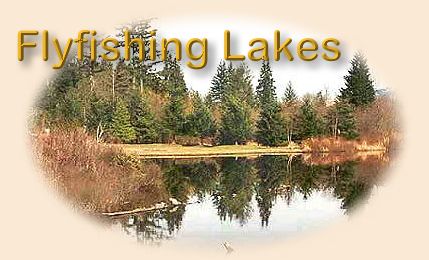 To many, damselflies are the one insect
synonymous with stillwaters. The vivid black
and blue adults of some species are a common
sight throughout the late spring and summer
months. The active habits of damsel nymphs
makes them a logical choice when exploring
unfamiliar waters. Damsel nymphs are a year
round food source that all stillwater fly-fishers
should be familiar with. With over 450 species
across North America, damselflies are widespread.
From my observations, damsels are the third most
important food source in the larder of stillwater
trout.
To many, damselflies are the one insect
synonymous with stillwaters. The vivid black
and blue adults of some species are a common
sight throughout the late spring and summer
months. The active habits of damsel nymphs
makes them a logical choice when exploring
unfamiliar waters. Damsel nymphs are a year
round food source that all stillwater fly-fishers
should be familiar with. With over 450 species
across North America, damselflies are widespread.
From my observations, damsels are the third most
important food source in the larder of stillwater
trout.
Photos on the right: Top - Damsel nymph on the
prowl amongst the vegetation.
Bottom: Adult damsel at rest. Notice the wing
position, besides their size this
is a key to avoid confusing damsels with
their larger cousins, dragonflies.
The aquatic stage of the damselfly is the most
important. Damsel nymphs are skinny and elongated.
This is an important point to keep in mind at the
vise. In addition to their long, slender bodies,
damsel nymphs have three fan tails. The resting
nymph waives these tails to draw oxygen as they
form part of the insects' gill structure. The
largest feature of the nymph is its head. Located
on the sides of the head are a pair of prominent
eyes. Six sturdy legs enable the nymph to clamber
through the underwater jungle in search of prey.
Damsel nymphs are plodding, methodical swimmers.
They swim with their legs outstretched while moving
their abdomen in a snake-like, sultry manner. This
is a tiring motion as the nymph gains little forward
progress so rests are frequent. This distinct
swimming motion can be nearly impossible for the
fly tier to imitate during selective feeding.
Damselflies have a one-year life cycle. Once hatched,
the nymph begins its never ending quest for food.
Fearsome predators, damsels use their long, foldable
labium to subdue scuds, Chironomid larvae, and mayfly
nymphs. Lying in ambush on the undersides of weeds
is a favorite tactic. Growing through a series of
molts called instars, the nymph can reach 1 1/2
inches at maturity. Damsels emerge from mid June
to early July depending upon temperature and elevation.
The mature nymphs leave the security of the weeds
and swim en masse towards the nearest landfall.
This subsurface migration provides a perfect
silhouette for hungry trout. Splashy, aggressive
rises are a good sign of a hatch. Marauding trout
show reckless abandon during these hatches and
often follow the nymphs into skinny water. It is
important to retrieve the pattern in the same
direction as the nymphs. In some instances this
means anchoring or standing amongst the tulles
or long-stemmed bulrushes. Those nymphs that
survive the open water trek clamber up the first
object they run into. The nymph's thorax splits
and the emergent adult, or teneral crawls out.
At first glance, the teneral is a carbon copy
of the nymph. But soon after the teneral's body
and wings telescope out. In less than half an
hour the teneral is ready for its first clumsy
flight lessons. During the entire emergence, the
damsel is vulnerable to attack especially from
ants and other insects. Although individually
smaller than the damsel, the ants mass assault
soon overcome this once fierce underwater predator.
Those damsels emerging on long-stemmed bulrushes
or tulles are not out of the woods either. Trout
who could not get their fill of migrating nymphs
turn their attention to the struggling tenerals.
Under certain conditions, trout rub and knock the
tenerals from their perches. With a quick stroke
of their tails the trout return to savor the
waterlogged tenerals. ~ PR
More on Damselflies from Phil Rowley's excellent book,
Fly Patterns for Stillwaters next time.
Credits: Excerpt from Fly Patterns
for Stillwaters By Philip Rowley, published
by Frank Amato Publications. We appreciate use
permission.
|


